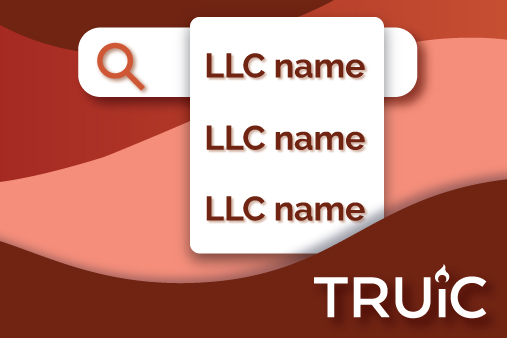How to Design Your Logo
When you design the right logo and attach the right values, you can let it speak for your business. Here are a few design tips that you can use to help you sketch your logo. Once you’ve got an idea in mind, check out our Free Logo Generator to make it official.

What Makes up a Logo?
When you’re getting ready to design your logo, you need to remember that it has a lot to do with how the public sees you. When you don’t have a lot of space or time, you can use the logo to tell people everything they need to know.
For example, a frenzied shopper trying to make their way through a crowd only needs to see the red-and-white bulls-eye to know where to find Target. An internet user only needs to see the iconic blue bird to know how to navigate to Twitter.
The Basic Structure
Your first step is to learn the basic structures for your logo. Some companies will simply use the name of their business. This structure is known as a wordmark. If a company abbreviates the name of their company, this is known as a monogram logo. Other companies might only use a picture, known as a pictorial mark. (A combination mark is one that combines both text and pictures.)
Consider Your Audience
As you decide what you want your logo to be, consider your target audience first. You likely already know some basics – for example, retirees might not want to see a beach ball logo in bright colors, and kids likely won’t respond to abstract drawings.
But you should dig a little deeper. For example, if your target demographic is middle-aged men, they might not need to see any images at all. You might be better off just choosing a font and colors for the letters of your business name. (If you need help with deciding your company name, we have a Business Name Generator tool for you.)
Why is Color Important?
Color can be the key to catching someone’s eye and invoking certain emotions in them. A soft blue pastel might be a calming sight for a customer, one that invites them to learn more about you. A radical red might invoke feelings of passion in a customer, causing a strong enough reaction that they feel compelled to take action.
Some companies will make their logo just one color, but most will choose at least two. When you’re designing the logo, consider what it will look like if you ever need to scale your color scheme down. For example, if McDonald’s is short on space, marketers just use the Golden Arches to create the famous M. Nike might print an orange or black swoosh mark instead of accompanying the logo with their name or tagline.
What Should you Know About Your Text?
Your text is first and foremost about readability. Beautiful calligraphy in intricate cursive may look elegant, but it’s not going to help you if your customers cannot distinguish one letter from the next.
A lot of companies will favor sans serif font, largely because it gets straight to the point. There are few embellishments or flourishes that will get in the way of their message. However, the downside to choosing sans serif is that the creative aspects of your brand can get lost in such a no-nonsense style.
You should also think about the typography for your logo. Do you want your company name to be squished together or spaced out? Would you make more of an impression if the letters were of various sizes like you might see with a message made from magazine cut-outs? There are no real rules here; just be sure to keep in mind how your customers will respond.
What’s Your Story?
The story of your company should ideally be wrapped up in your logo. Your values and brand should shine through, regardless of what they happen to be. The Burger King logo is encased in two yellow buns. The Toyota logo is the intersection of two steering wheels (that also happen to form the letter T). If you drew a picture of your brand, would that picture show that you were serious, dependable, fun-loving?
The purpose behind the story is to connect with your customers on far more than a financial level. Customers today know what it means to be offered a good or service purely for profit. If you want your brand to be trustworthy, you have to make sure that your customers can connect with it.
This might not mean hiring a professional graphic artist who first analyzes every metric of your brand. Maybe it means building your logo from the stick-figure drawing that your 4-year old daughter made for you at the kitchen table. If your story is centered around family, this could be a means to connect with your audience.
Here are a few questions to ask:
- Why did you decide to start your company?
- Who do you want to help?
- What does your brand value?
- What sets you apart from your competitors?
Should you Design the Logo Yourself?
The right answer for you will depend on everything from your professional experience to your daily to-do schedule. Ideally, you should at least give it a try before you hand the project off to someone else. There are plenty of tools available to help you, from free logo design software to pen-and-paper.
Designing a logo should start with a brainstorming session where you just get everything out on paper. Remember that during this session, there is no such thing as good and bad. There are only your ideas flowing through you. You can look at other competitors for inspiration as long as you don’t copy anything.
If designing a logo is only serving to make you more frustrated or you find yourself putting the task off constantly, it might be better to settle on a few general ideas (e.g., font size, colors, image, etc.) and let a professional designer take it from there. You might also consider running a contest for your logo to help you see a few interpretations of your brand. Then, you can decide which one best fits your values.
If you need help with desiging a logo for your brand, check out our top 5 best logo makers of 2021 review and find the best tool to help you create a logo for your small business.
Why is Good Branding Important?
Good branding does more than just set you apart; it can become the rope that ties you and your customers together. When your company lives its values, you can build trust with everyone from your employees, to your vendors, and to your customers.
Living your values might mean anything from manufacturing safe and quality products to always showing up in a crisis to providing customer service that goes the extra mile every time. Branding is often the ideal. It’s the pie-in-the-sky dream that a company aspires to.
But you need to be careful about making over-the-top promises. There’s nothing wrong with setting up lofty goals and aspirations, but you just need to make sure that you’re taking daily steps to meet them and improve on a continual basis. This is the key to following through on your commitments and forging a kind of relationship with your customers that will actually last.
A logo represents all the hard work you’ve done and a culmination of every action you’ve taken. It’s just one building block that you can use to give customers a real behind-the-scenes look at what you stand for.
When you’re trying to Form an LLC, there’s a lot to think about. We’re here to help you get set up however we can. From design software to guides on How to Trademark Your Brand and how to Register Your Business Name, we go over it all so nothing slips through the cracks.

